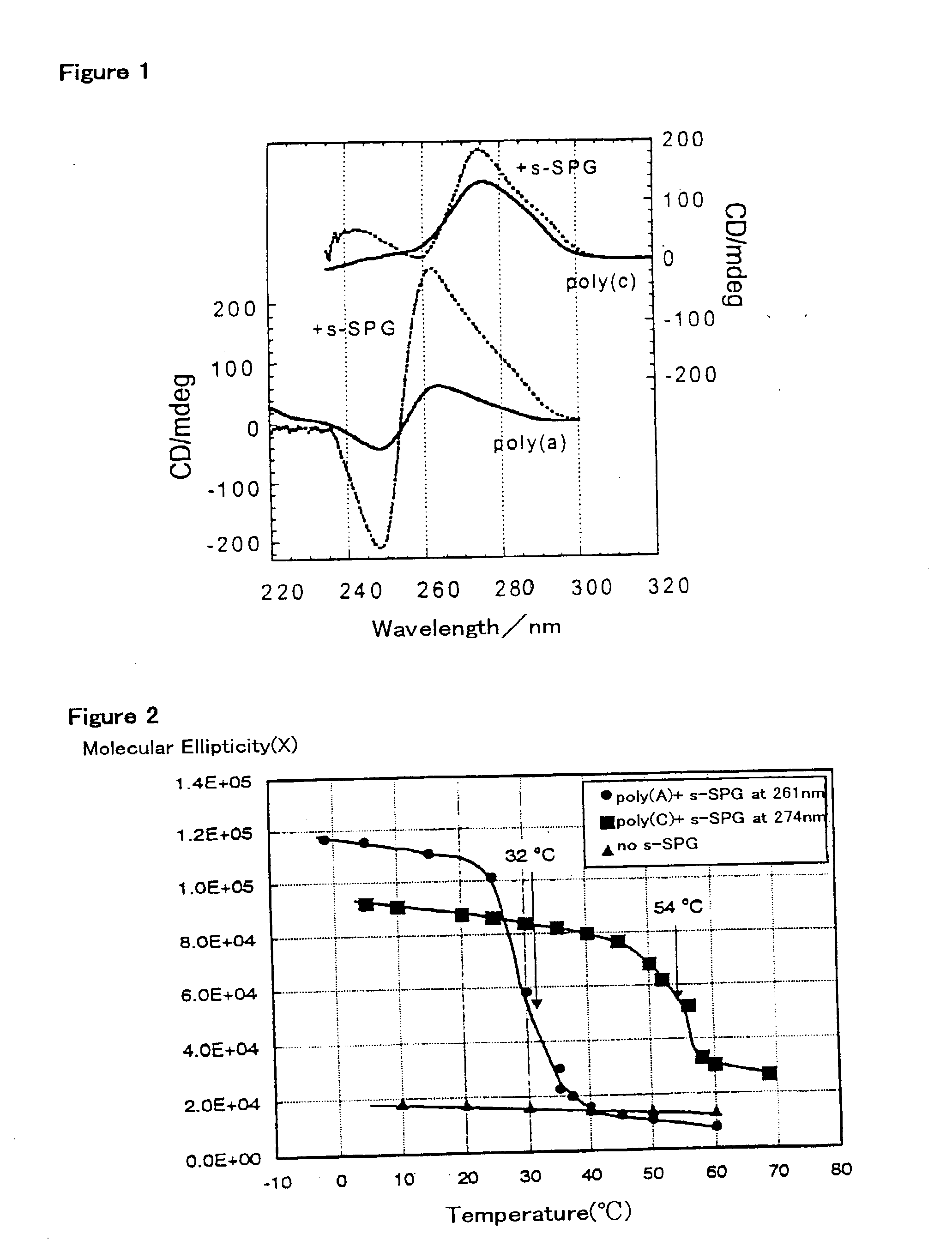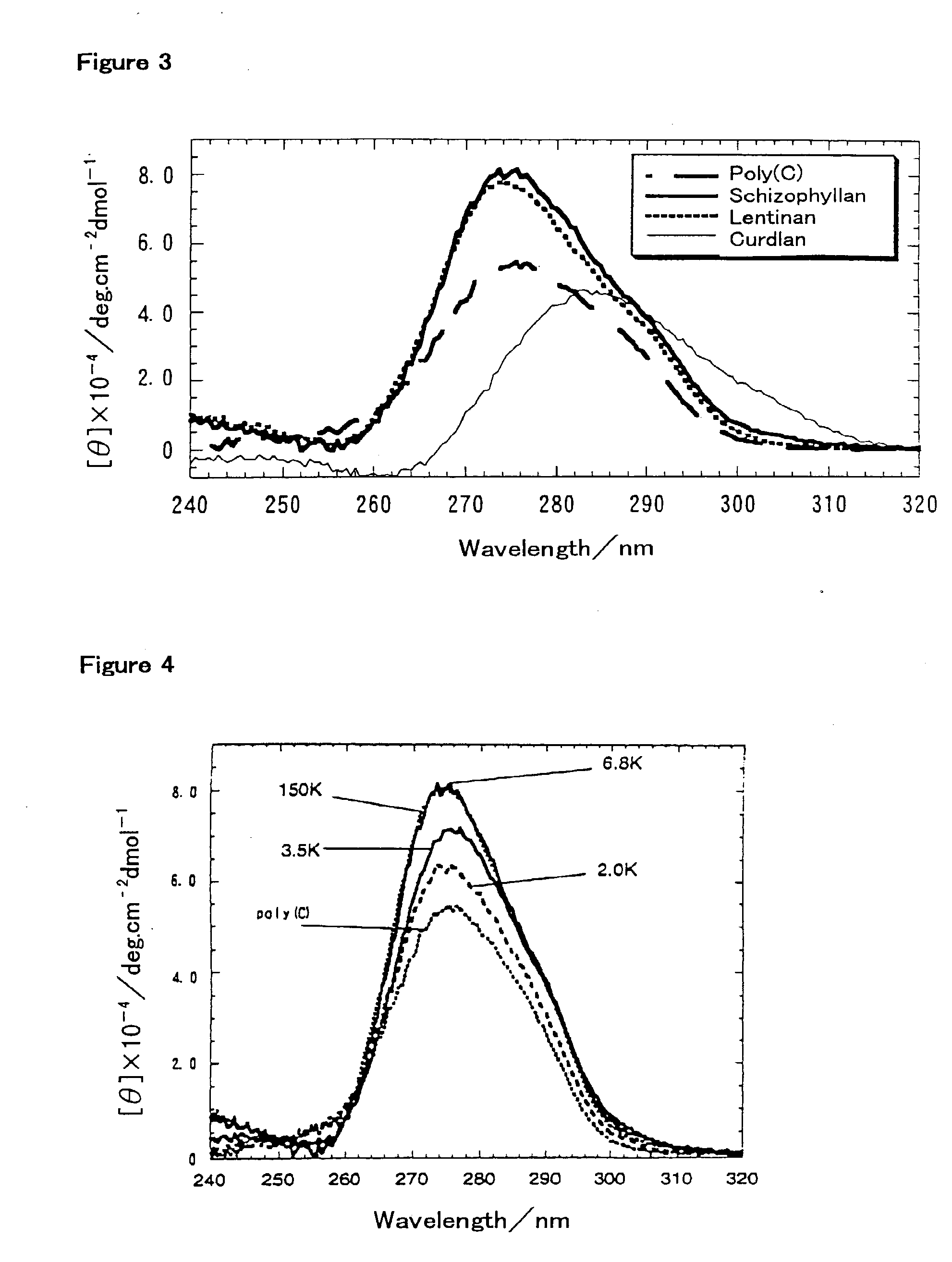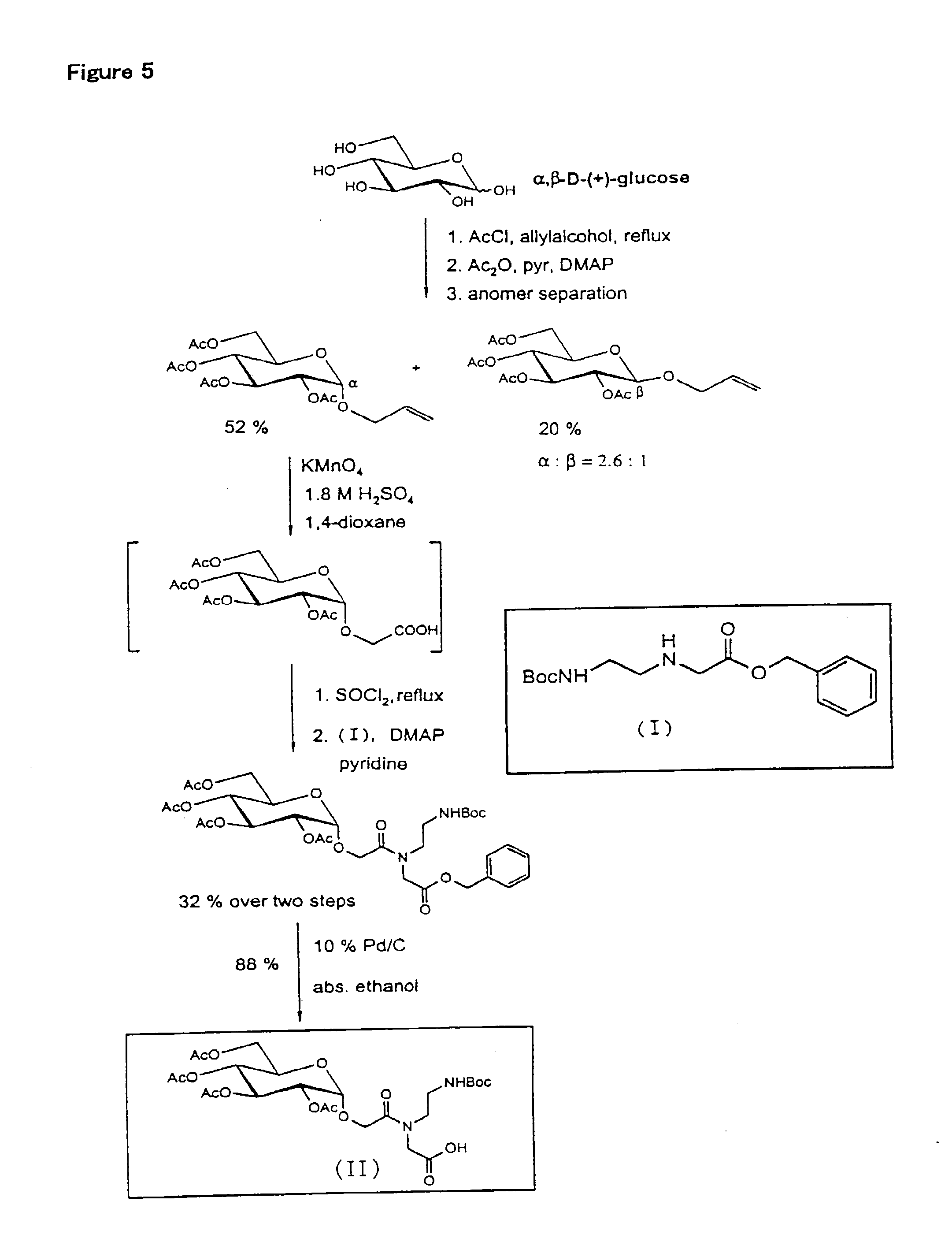Gene carrier
a gene carrier and carrier technology, applied in the field of gene carriers, can solve the problems of low gene-transfer efficiency, limited gene information expression, and in-vivo use of conventional gene vectors composed of artificial materials that have produced no significant results in human clinical studies
- Summary
- Abstract
- Description
- Claims
- Application Information
AI Technical Summary
Benefits of technology
Problems solved by technology
Method used
Image
Examples
example 1
[0047]Schizophyllan of a triple helix structure was prepared as follows by the conventional method as described in “A. C. S. 38(1), 255 (1997); Carbohydrate Research, 89, 121-135 (1981)): Schizophyllum commune. Fries (ATCC 44200) available from American Type Culture Collection was subjected to a stationary culture in a minimal medium for seven days. After removal of the cellular materials and insoluble residues, the supernatant was subjected to a supersonic treatment to yield schizophyllan of a triple helix structure having a molecular weight of 450000.
[0048]The schizophyllan was dissolved in a DMSO solution (1%), thereby unbinding the triple helix into a single strand. The solvent was replaced with water by means of ultrafiltration. The concentration of schizophyllan was adjusted to be 0.5 g / dL. To 100 microliter of this solution, there were added 1000 microliter of pure water (pH 6.5) and 100 microliter of a nucleic acid solution containing poly(A) (0.1 g / dL). The resultant soluti...
example 2
[0049]A mixture was prepared in the same manner as in Example 1, except that schizophyllan of a triple helix structure having a molecular weight of 70000 was used. The resultant solution was opaque and homogeneous.
example 3
[0050]A mixture was prepared in the same manner as in Example 1, except that poly(C) was used in place of poly(A). The resultant solution was opaque and homogeneous.
PUM
| Property | Measurement | Unit |
|---|---|---|
| concentration | aaaaa | aaaaa |
| pH | aaaaa | aaaaa |
| concentration | aaaaa | aaaaa |
Abstract
Description
Claims
Application Information
 Login to View More
Login to View More - R&D
- Intellectual Property
- Life Sciences
- Materials
- Tech Scout
- Unparalleled Data Quality
- Higher Quality Content
- 60% Fewer Hallucinations
Browse by: Latest US Patents, China's latest patents, Technical Efficacy Thesaurus, Application Domain, Technology Topic, Popular Technical Reports.
© 2025 PatSnap. All rights reserved.Legal|Privacy policy|Modern Slavery Act Transparency Statement|Sitemap|About US| Contact US: help@patsnap.com



